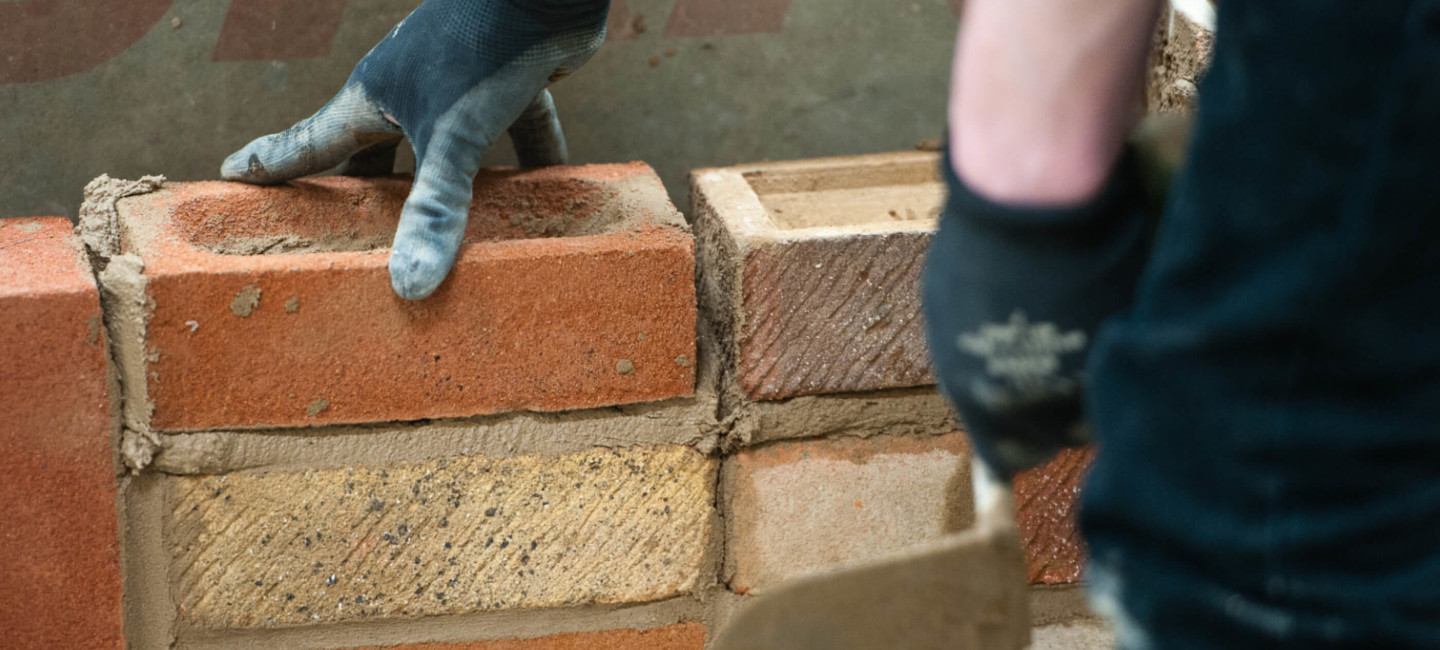Bricklayer Auckland Things To Know Before You Buy
The Bricklayer Auckland Diaries
Table of ContentsBricklayer Auckland - TruthsBricklayer Auckland Fundamentals ExplainedAll About Bricklayer AucklandThe Greatest Guide To Bricklayer AucklandThe Only Guide for Bricklayer AucklandOur Bricklayer Auckland Ideas
Blocks need to constantly be piled on slabs; never ever load them straight on uneven or soft ground. Do not keep bricks on scaffolds or runways.Except where piled in sheds, block stacks need to never ever be more than 7 feet high. When a pile of brick reaches an elevation of 4 feet, it has to be tapered back 1 inch in every foot of height above the 4-foot level. The tops of block stacks must be maintained level, as well as the taper have to be preserved during unpiling procedures.
Architectural bond refers to just how the private stonework systems interlock or tie with each other into a solitary architectural device. Making use of grout to stick surrounding wythes of stonework.
Facts About Bricklayer Auckland Revealed
Pattern bond describes the pattern created by the stonework devices as well as mortar joints on the face of a wall (Bricklayer Auckland). The pattern might result from the structural bond, or it might be totally decorative and also unrelated to the structural bond. Number 4-4 shows the six fundamental pattern bonds in typical usage today.
The running bond is the simplest of the 6 patterns, including all cots. Due to the fact that the bond has no headers, metal connections normally develop the architectural bond. The running bond is used greatly in tooth cavity wall construction, brick veneer walls, as well as facing tile wall surfaces made with extra wide stretcher tile.
Excellent blocks should not disintegrate when positioned in water. Only when fat lime or clay mortar is utilized or when one is required to use blocks that are not well burned, this saturating policy has actually to be kicked back.
The 3-Minute Rule for Bricklayer Auckland
In all instances, blocks should not be managed in baskets or in any other setting which will ruin the sharpness of their edges. Exactly how do you construct a masonry wall? The operation of bricklaying in regular basic work is as complies with. A layer of mortar is infected cover the complete width of the wall surface for an ideal length of the lower course.
Ultimately, we push the side protruding mortar in strongly to be level with the face of the wall if it is to be left unplastered. In the usual method embraced by several masons, a row of blocks is very first put on a thin layer of bed mortar leaving the cross joints vacant.


The walls are elevated really plumb. All programs are laid really horizontal and all vertical joints truly vertical.
Some Of Bricklayer Auckland
For this function, a wood straight edge with graduation providing a density of each brick course including joint can be made use of for assistance. For a thick wall, the above procedure is duplicated in addition to both faces of the wall surface as well as the interior filling up bricks for the thick wall surface are laid in a comparable manner.
This operation of loading open joints is labelled flushing-up. It is mistakenly omitted for several training courses on some badly-executed tasks as well as only done after that (not after every program) in an inefficient way. It is not a good practice as well as ought to be avoided as it is essential that every training course should be flushed as much as the degree if good job is needed.

Some Known Questions About Bricklayer Auckland.
The mortar climbing as well as filling the upright joints completely and also develops an exceedingly strong and also strong wall. This is understood as larrying. For a rat trap bond work (as in the building and construction of cavity walls), if the mortar is placed carelessly on the brick, a few of it will come under the dental caries as well as will certainly be lost.
The face of the brickwork will likewise be cleaned of all mortar droppings, and so on(ii) When situations make description it essential to continue a part of a building in irregular programs, the work will be built back (according to the bond made use of on the click for more work) at an angle not steeper than 45 levels so regarding ensure an attire as well as efficient bonding.
Otherwise, for faces to be smudged, completing of the face joints should be accomplished as reviewed in listed below (This is really crucial.)(iv) The wall surfaces ought to be consistently elevated around not leaving any kind of component one metre (3 feet) less than the other - Bricklayer Auckland. A day's job must not be even more than 1.
The Best Strategy To Use For Bricklayer Auckland
When the facework is to be later plastered or the joints alone are to be sharp, the joints should be raked while the wall surface is being built. Bricklayer Auckland. It needs to be raked to a minimal deepness of 12 mm by a raking device during the development of the job itself, when the mortar is still environment-friendly.
If plastering or aiming is not imagined, the joints must be struck flush and finished at the time of laying itself, as currently mentioned. Half-brick wall surfaces often tend to crack unless care is taken in its building learn this here now and construction. Brickwork in half-brick masonry is to be accomplished with stretchers in 1: 5 mortar.